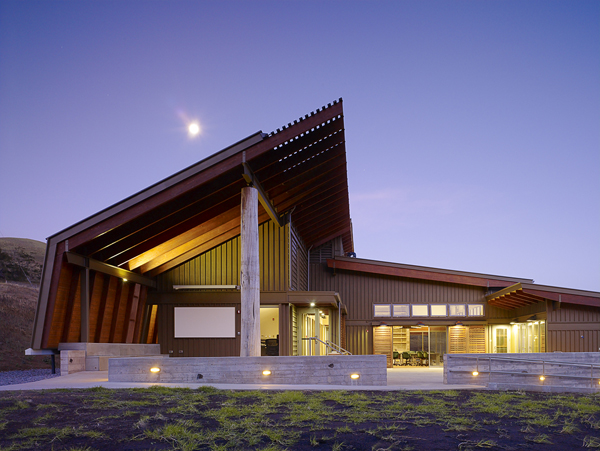Three "living buildings" redefine sustainability

The three greenest buildings in the United States aren't necessarily LEED Certified, but they are alive.
The Living Building Challenge, a project of the International Living Future Institute, isn't just about using specific building materials or taking advantage of passive solar. Instead, the Living Building Challenge governs everything from the kind of property a building can be built on (no old-growth forest, for example) to the amount of water and energy that they can consume ("Living Buildings" are net-zero water and run on 100 percent solar energy).
These standards are far from timid. They're not meant to be, and the sustainability world is taking notice. On June 6, the International Living Future Institute won the Buckminster Fuller Challenge, a $100,000 award granted to organizations implementing "a strategy that has significant potential to solve humanity’s most pressing problems."
"Above all," said one of the Buckminister Fuller jurors, "its rigorous standards and daringly innovative, revolutionary approach to building are already having a considerable impact on the thinking of designers and architects around the world, influencing all levels of design and technological approaches, radically pushing forward the field."
Up until now, just three buildings in the United States have met the "Living Building" standard. Take a tour below:
Hawaii Preparatory Academy Energy Laboratory
The $4.5 million Energy Laboratory, part of the Hawaii Preparatory Academy in Waimea, Hawaii, offers students a first hand look at sustainable living systems. The 6,000 sq. ft. Energy Laboratory features three kinds of solar panels, recycled wood doors, a radiant cooling system, and a freshwater catchment system. The front area (pictured above) provides space for outdoor classes, and window louvers help ventilate the building using mauka (mountainside) winds. In addition to being certified a "Living Building," the Energy Lab achieved LEED Platinum in 2010.
Omega Center for Sustainable LivingFounded in 1977, the Omega is a wellness center and workshop venue concentrating on Women's Leadership, Sustainable Living, Veterans Initiatives, Mindfulness, and Service in Rhinebeck, New York. In pursuit of the goal of sustainability, Omega built the $3.5 million Center for Sustainable Living in 2009. The 6,250 sq. ft. building uses 200 photovoltaic solar panels to power the building. Heat and air conditioning are provided water pumped from deep wells. More impressive, perhaps, is the facility's Eco Machine™, a water reclamation system that treats wastewater using things like microscopic algae, fungi, and snails. The Center for Sustainable Living earned LEED Platinum standing in 2010.
Tyson Living Learning CenterBuilt as an extension of the Tyson Research Center at the Washington University in St. Louis, the Living Learning Center transformed an ordinary asphalt parking lot into a center for eco-systems research. The 2,900 sq. ft. Research Center was built with locally-harvested wood, and is powered by photovoltaic panels. Water is delivered through a rainwater harvesting system. In addition to providing students with access to one of the world's most sustainable buildings, Washington University students at the Living Learning Center benefit from close proximity to a 2,000 acre outdoor laboratory.
[CNN]
Interested in Living Buildings? Read more below:
This post was originally published on Smartplanet.com